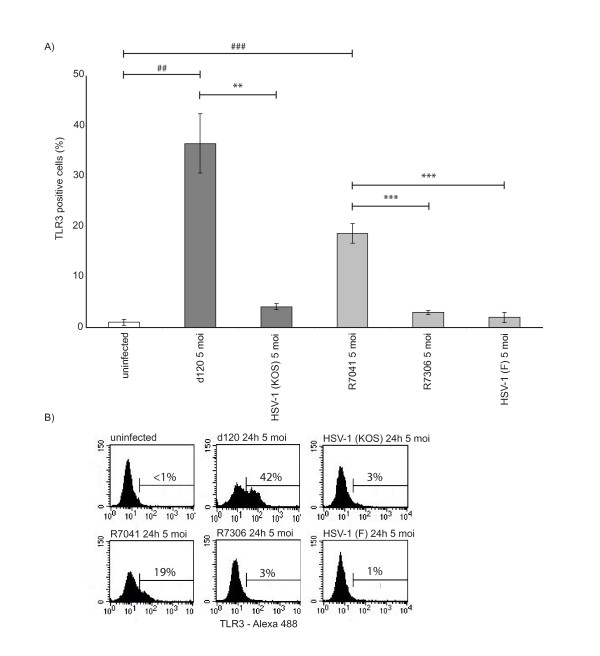Figure 2.
The intracellular expression of TLR3 was increased in d120 and R7041-infected U937 cells. A) The U937 cells were infected with d120, its parental virus HSV-1 (KOS), R7041, its rescue virus R7306 or HSV-1 (F) viruses with 5 moi and the level of intracellular TLR3 was studied with flow cytometry at 24 h p.i. The intracellular expression of TLR3 was significantly increased in d120-infected cells when compared to its parental virus HSV-1 (KOS)-infected or uninfected cells. In addition, the TLR3 expression was significantly increased in R7041-infected cells when compared to its rescue virus R7306, HSV-1 (F)-infected or uninfected cells. The bars represent the mean level of TLR3 positive cells ± standard deviation from three independent experiments. The statistical significances of the differences in TLR3 intracellular expression in comparison with the d120 parental virus HSV-1 (KOS) or HSV-1 (F) are marked as * (**:p < 0.01, ***:p < 0.001) and in comparison with uninfected cells are marked as # (##: p < 0.01, ###:p < 0.001). B) Representative flow cytometry histograms showing intracellular expression of TLR3 in uninfected cells or in U937 cells infected with d120, its parental virus HSV-1 (KOS), R7041, its rescue virus R7306 or HSV-1 (F).

